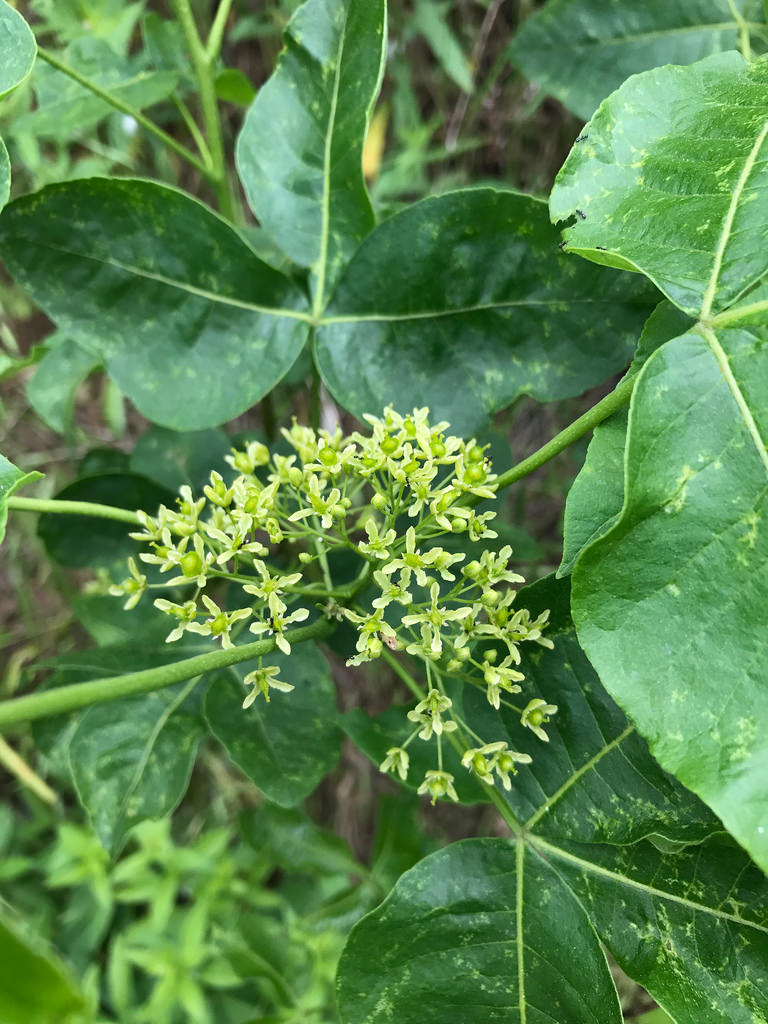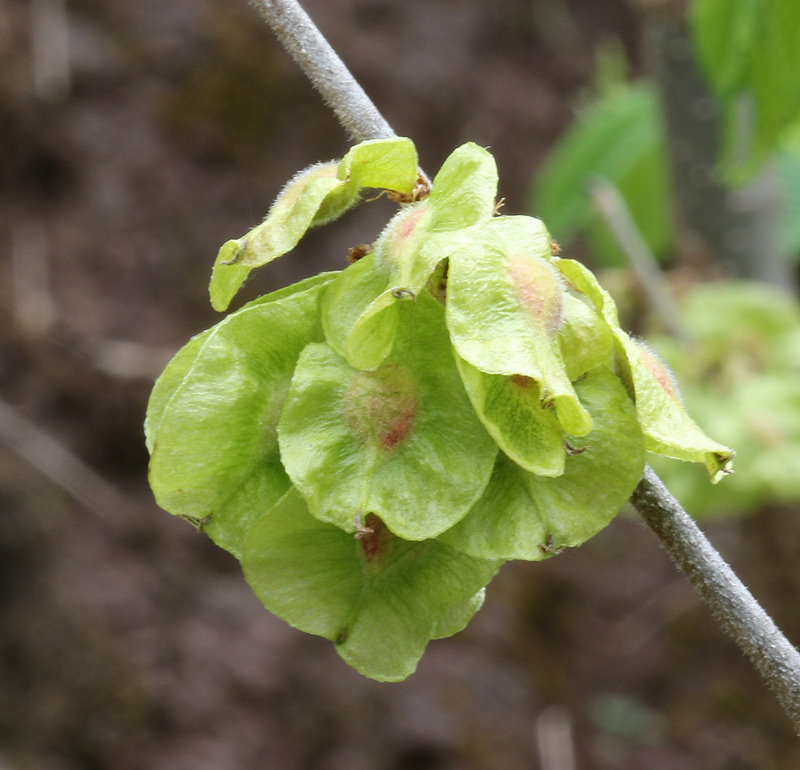Common Hoptree
Ptelea trifoliata L. ssp. trifoliata
Description
Common hoptree is a member of the rue family (Rutaceae). ¹ It is a small, deciduous tree up to 25 feet in height and trunks usually less than 8 inches in diameter. The bark is brown and ill-scented. The alternate, compound leaves are trifoliate with each leaflet sessile and 2-5 inches long. ² The flowers are small but clustered terminal inflorescences. ² They are pollinated by carrion flies. ² Fruits have broad, veined wings that are nearly circular and 1 inch in diameter.

Leaves and flowers of common hoptree. Maryland Biodiversity Project–J. Brighton ³

Fruits of common hoptree. Maryland Biodiversity Project, J. Stasz. ³
Distribution
Common hoptree is distributed in the Central and Eastern United States. 5 It is widely distributed throughout the Eastern United States, Ontario and Quebec Canada. 5 In Maryland common hoptree is distributed along the Potomac River drainage from Allegany to Charles County. ³

Native distribution map of common hoptree. Virginia Tech Dendrology. 4
Wildlife Importance
Hoptree is the larval host to the Eastern Tiger Swallowtail and Giant swallowtail butterflies. 5 It also provides food for birds, mammals and nectar for butterflies. 5
Economic Importance
Common hoptree is used horticulturally as a hedge species, but has little commercial importance. 6 It has several medicinal uses such as a tonic and antibacterial and has a soothing effect on mucus membranes. 6
Threats
Common hoptree has limited distribution inCanada where it is listed as a species of special concern. 7 It is listed as Critically Imperreled (S1) in New Jersey and New York and Vulnerable (S3) in Maryland. 7
Interesting Facts
- Common hoptree has three common names. Common hoptree is from the prior use of its seeds as a substitute for hops in making beer. ² Wafer ash comes from the thin membrane surrounding the seeds. ² Stinking ash comes from the pungent bark, foliage and flowers. ²
- It is the northernmost representative of the rue family in North America. 5
References
- North Carolina State Extension–Ptelea trifoliata
- Missouri Botanical Gardens–Ptelea trifoliata
- Maryland Biodiversity Project–Ptelea trifoliata var. trifoliata
- Virginia Tech Denrology–hoptree
- Lady Bird Johnson Wildflower Center–Ptrelea trifoliata
- Medicinal Herbs–Hop Tree
- Government of Canada: Common hoptree (Ptelea trifoliata): COSEWIC assessment and status report 2015
Contributed by J. Hull
